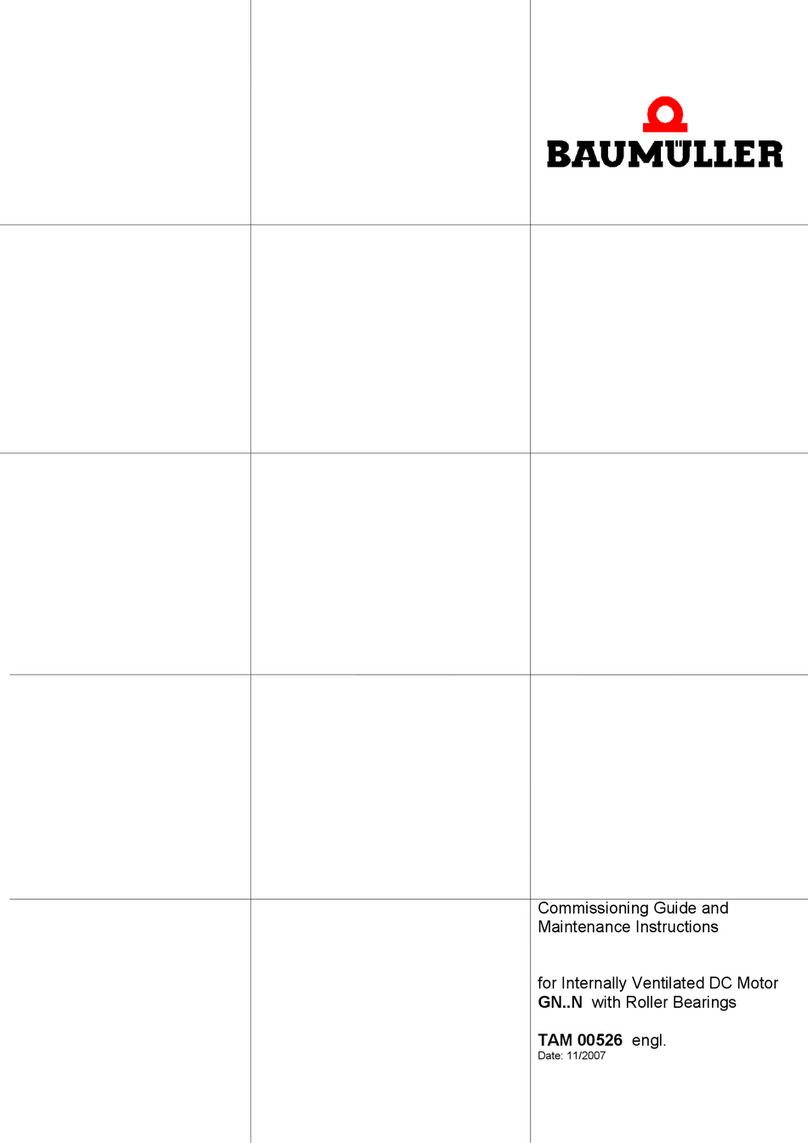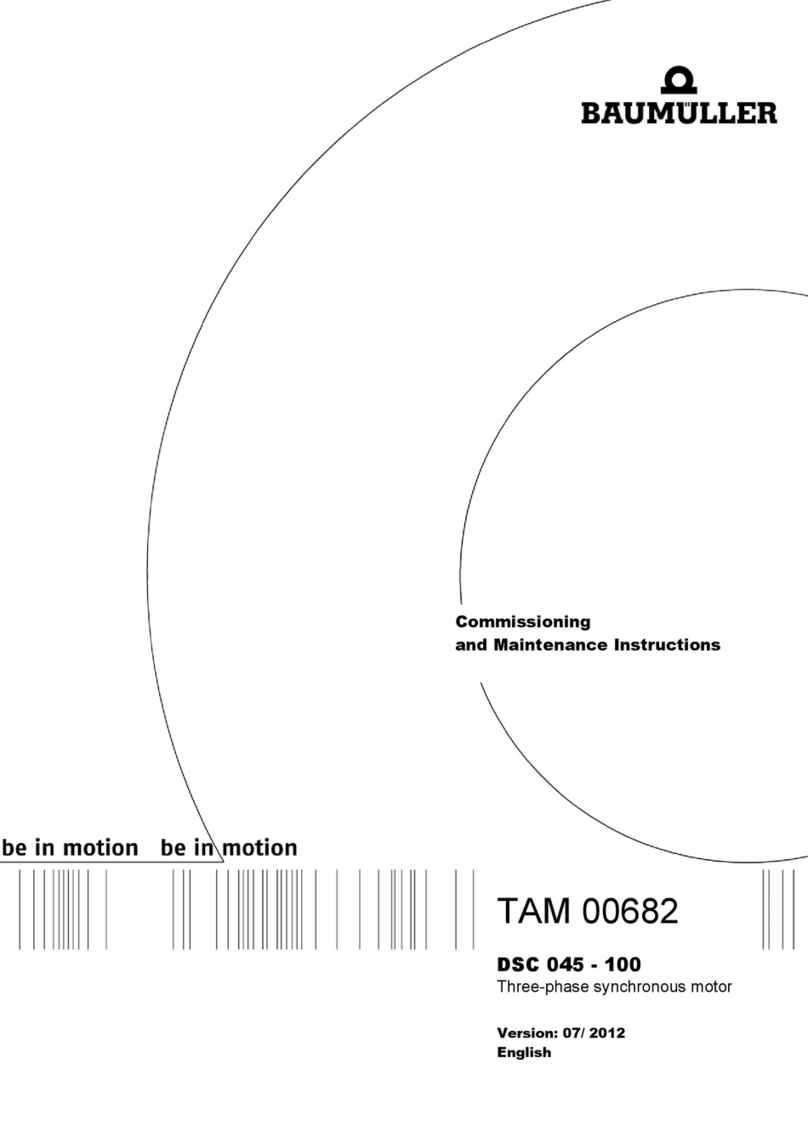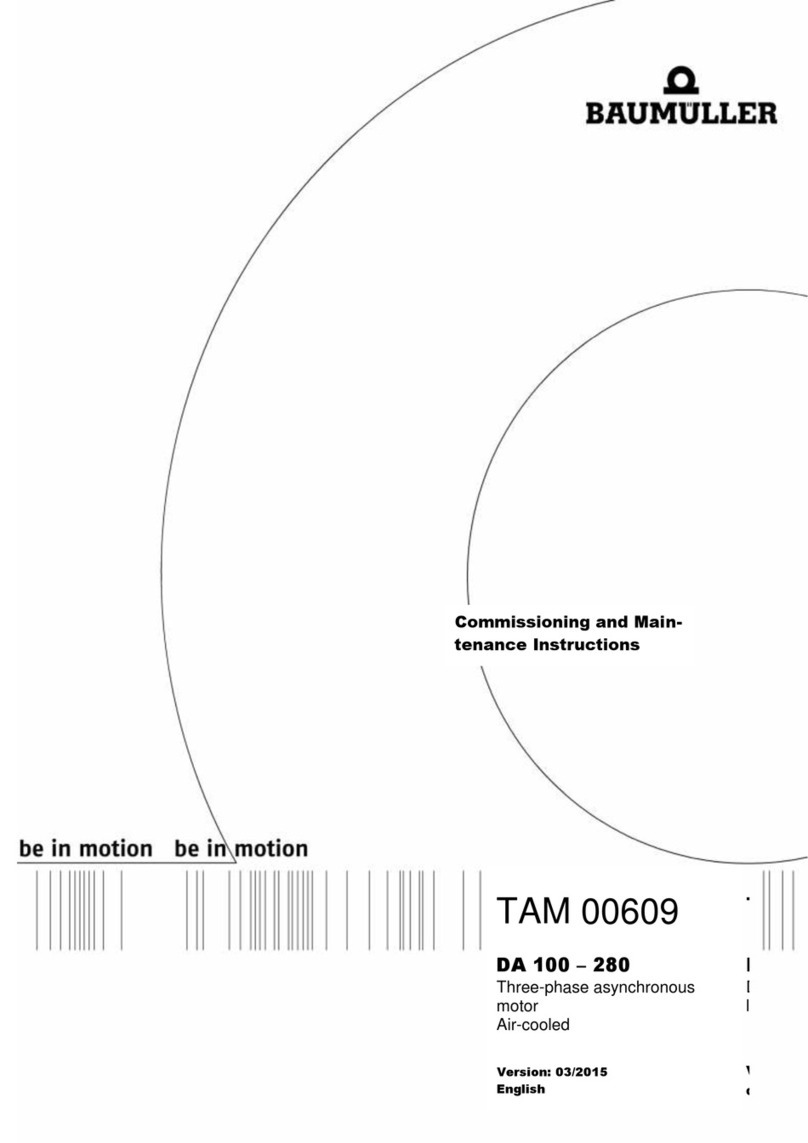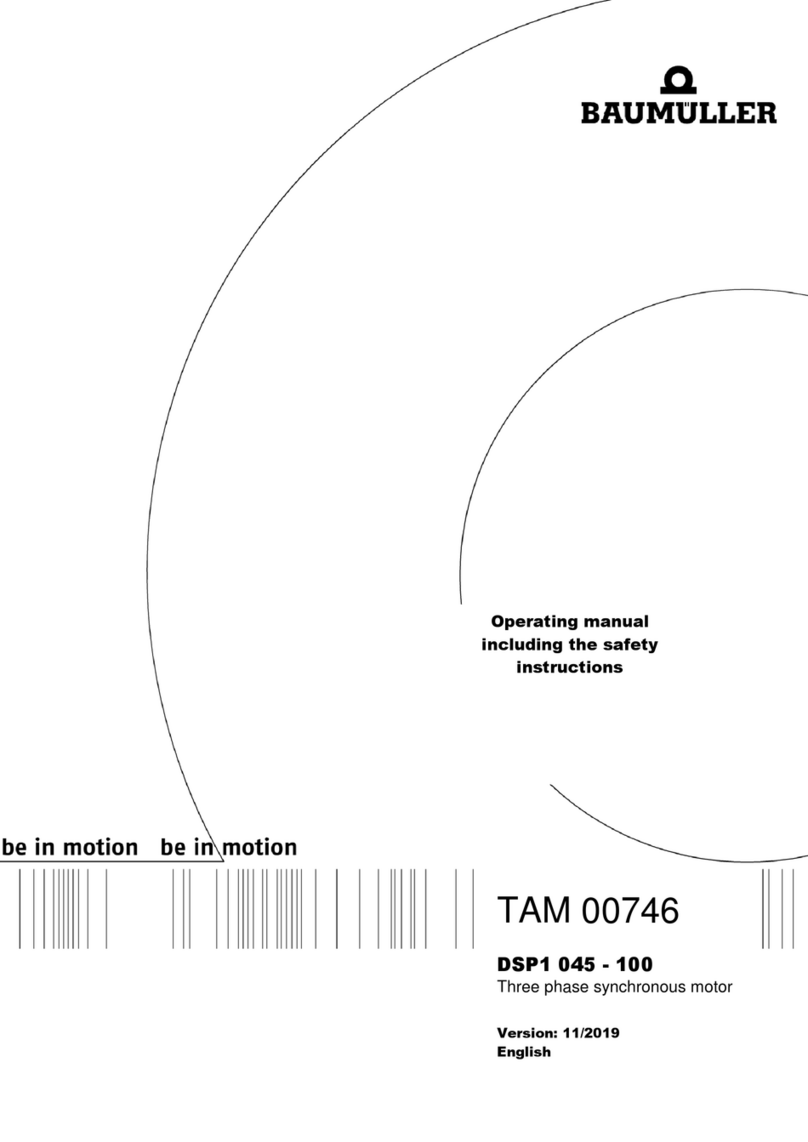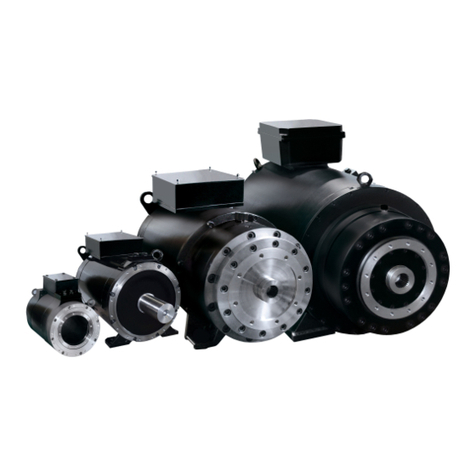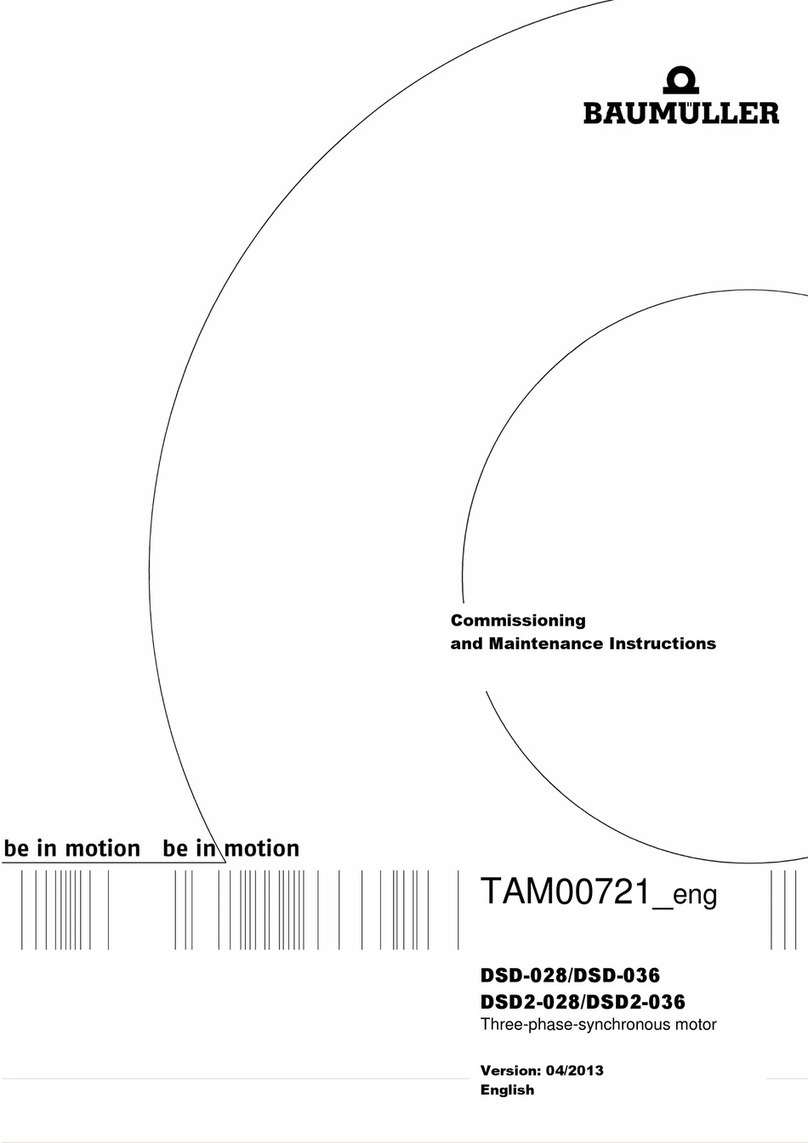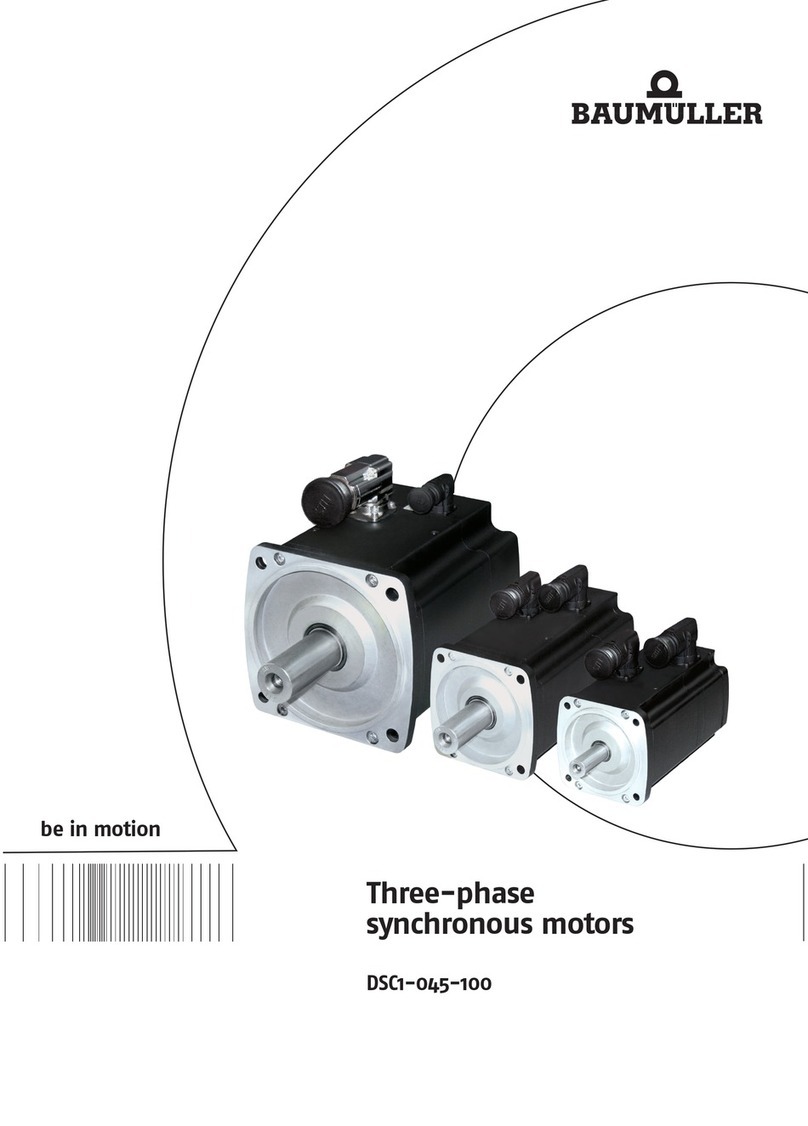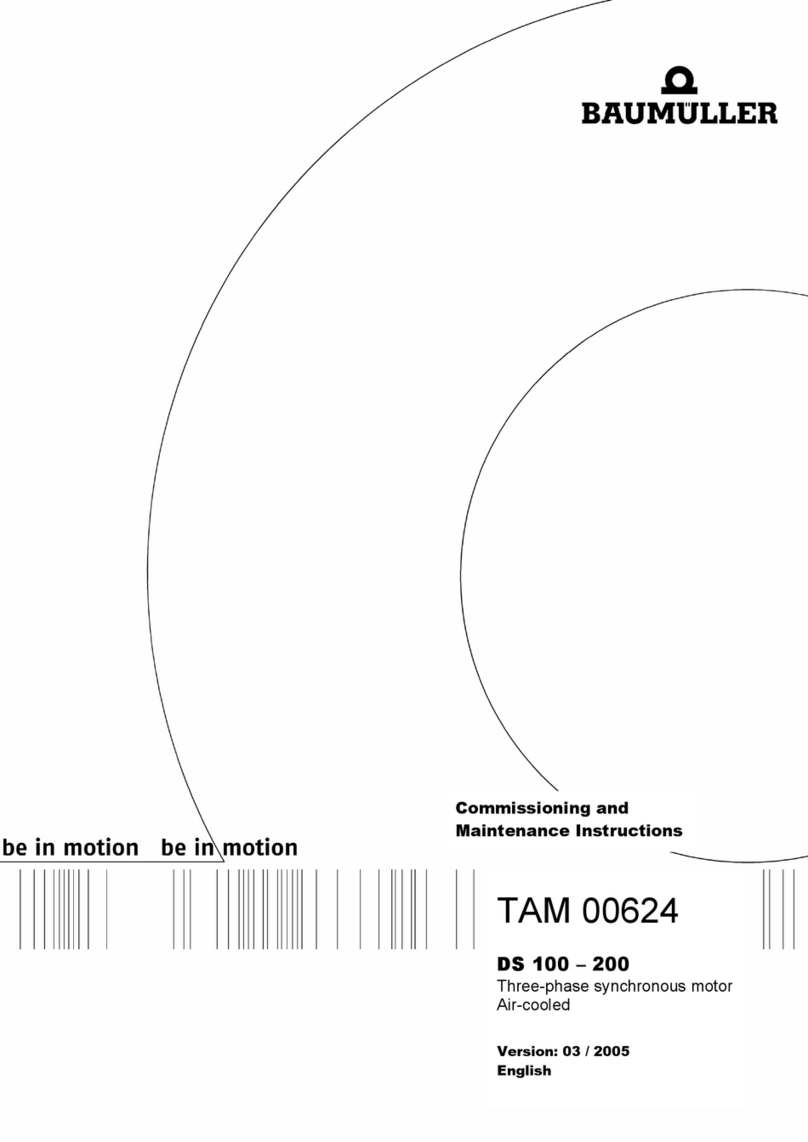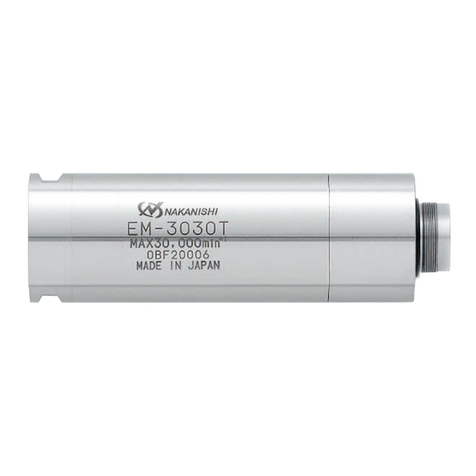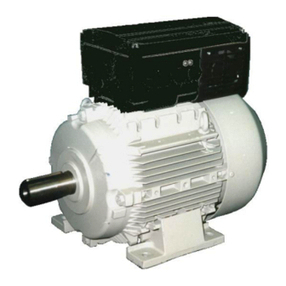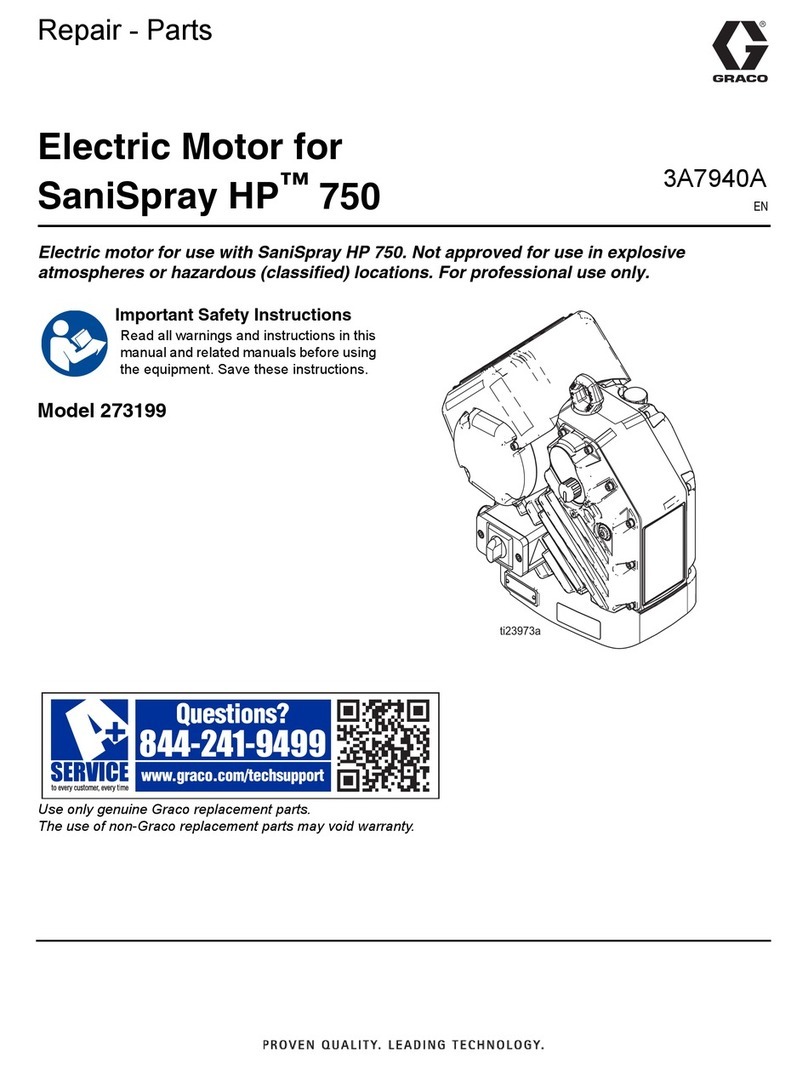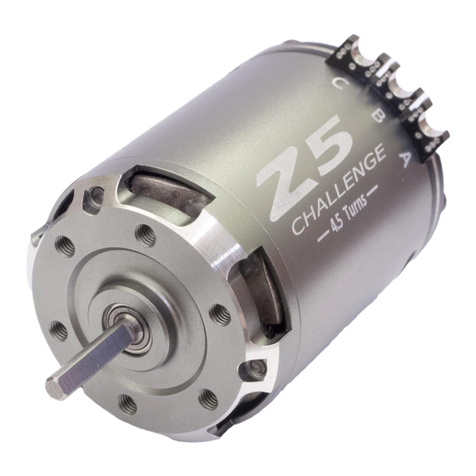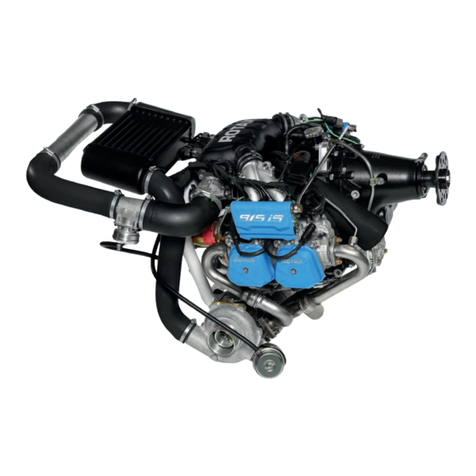
TAM 00621 9
DSD 45-100 05/2007
Three-phase synchronous motor English
Attention!
If the electric motor supplied is not a standard type as per the technical
list or if special contractual arrangements have been made, there may technical
differences to these Commissioning and Maintenance Instructions. In this case, please request the
related technical supplements.
2.5 Transport, intermediate storage
Transport:
Suitable load suspension equipment must be used, e.g. belts, slings, etc. The motor’s
lifting lugs can also be used for lifting (if present).
The motor connectors must not be used as a shipping brace or lifting lug.
The regulations of the relevant countries must be adhered to during transport. Lifting
devices, transport and load suspension equipment must comply with the regulations.
Baumüller “DSD” series electric motors weigh approx. 60kg. For details of their exact weight,
please refer to the technical documentation that accompanies the product.
The motor shaft and the connection surfaces must be protected against corrosion. The motor may
only be transported with a shaft protection cover and damage to the motor shaft must be avoided.
Intermediate storage:
If a motor is not to be commissioned immediately after delivery, it should be stored inside a building
in a dry, dust-free and low-vibration room (Veff ≤0.2mm/s).
The electric motors can be stored for max. 2 years at -30°C to +60°C. Higher storage temperatures
up to a max. of +85°C are permitted, but this can, however, lead to premature ageing of the seals.
Direct exposure to sunlight, UV light and ozone also ages the seals prematurely and must be
avoided!
Please note that the warranty periods commence from the date of delivery. For this reason, we
recommend that storage periods be kept to a minimum.
2.6 Installation conditions, cooling details
Surroundings:
The motor can be installed in roofed rooms with dusty or damp ambient conditions and normal
climatic conditions. Aggressive, corrosive, abrasive and plastic-dissolving solutions should be kept
well away from the motor and the air that is used to cool it.
If the motor is to be installed outdoors, you must consult the manufacturer.
Cooling details:
For ambient conditions, see Section 2.4 and the technical documentation that accompanies the
product.
Cooling method IC 410 – Self-cooling without a fan.
Cooling method IC 416 – Surface cooling with a fan.
The following must be observed:
•The installation conditions must not impair thermal convection and radiation.
•The cooling air used for forced ventilation must be able to flow in freely and the hot air must be
able to flow out freely. The hot exhaust air must not be sucked back in.
•A clearance of at least 100 mm must be observed in relation to neighboring machine parts.
•If installed in very dirty locations, the housing surface and airways must be cleaned regularly.
